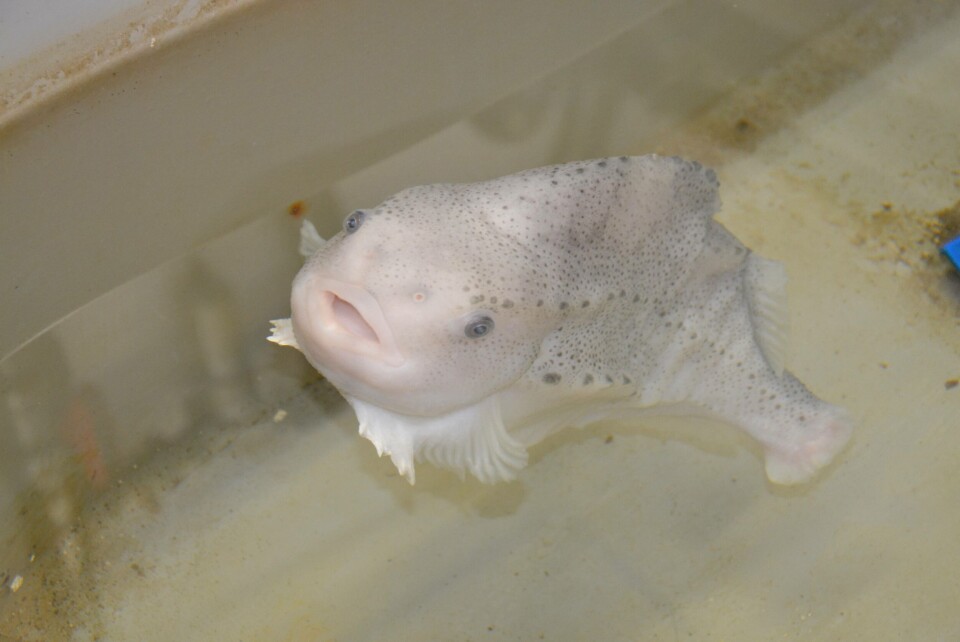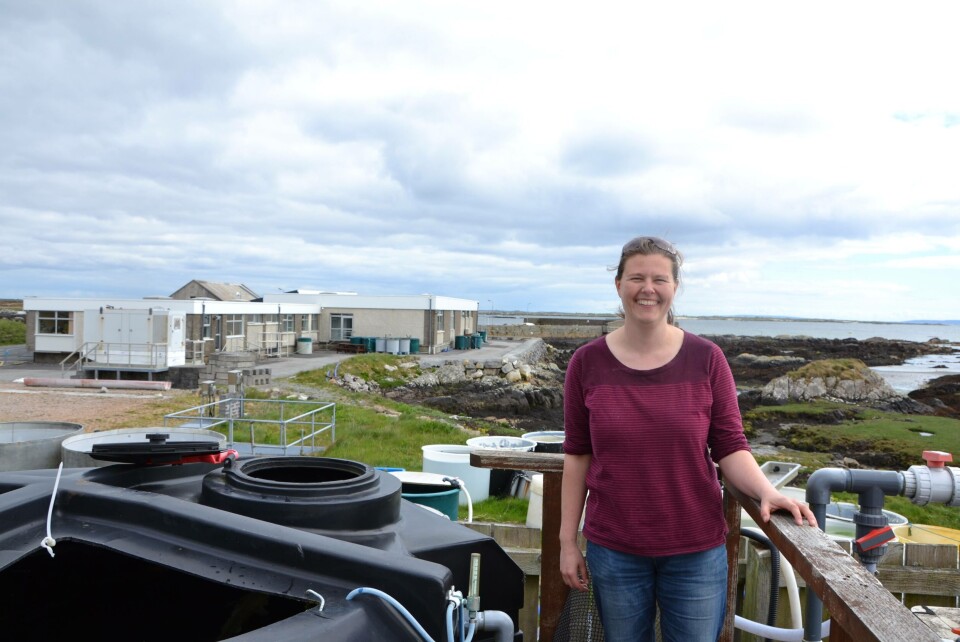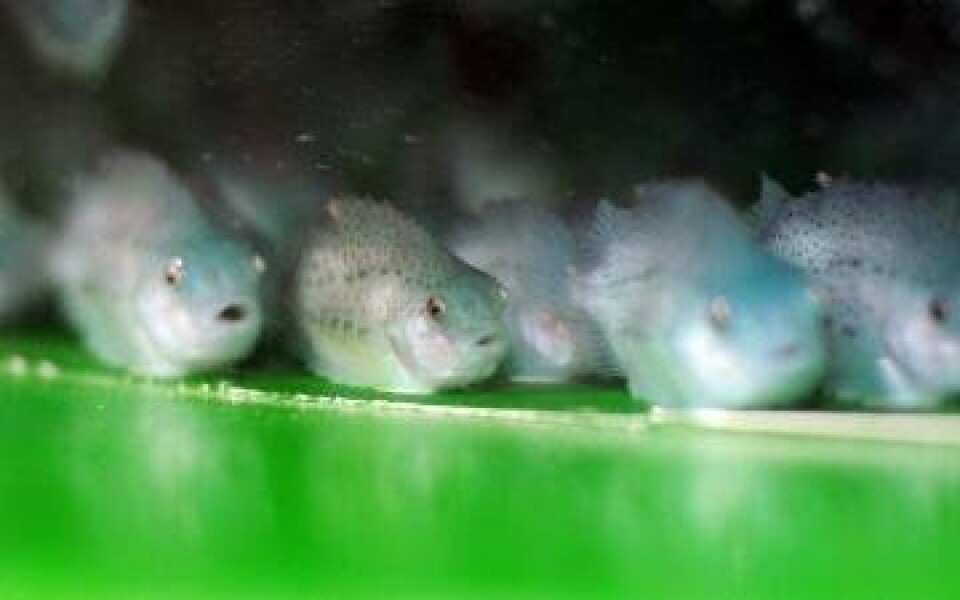
Irish on course for ‘own brand’ lumpfish
Ireland's Carna Research Station (CRS, National University of Ireland Galway) has produced and delivered more than 300,000 Irish farmed lumpfish to salmon producers in the country.
Scientists have great ambitions for both the use of cleaner fish technology and the development of the national aquaculture industry.
CRS is Ireland’s first lumpfish hatchery, and one of the main goals of the ongoing lumpfish project is to establish a native broodstock and initiate a breeding program for the fish to facilitate sustainable production.

Majbritt Bolton-Warberg is a senior researcher and project manager for the lumpfish program and is clearly proud of what they have achieved so far.
“We have now transferred over 300,000 lumpfish from our facility to sea cages from the north to the south of the country,” she says. “We are very proud to have reached that number as our primary objective is to act as a research facility. In the coming years, we hope to establish Irish family lines (of lumpfish) and to continue to provide applied research for the industry. There is a great demand for the fish from the producers and we are aiming to produce at least 250,000 lumpsucker each year to help meet the demand.”
Need for knowledge
Bolton-Warberg says CRS has imported lumpfish eggs from the UK, Norway and Iceland, but scientists want to establish Irish lumpfish lines to be self-sufficient in everything that is needed for sustainable lumpfish production in the country.
"From our experience so far, there have been no major differences in survival or growth of lumpfish from the different countries. It is possible, however, that endemic populations are better adapted to local conditions over the long term. In addition, producing a native strain will ensure that there are fewer biosecurity risks,” she adds.
There is currently limited knowledge of lumpfish populations in Irish waters and Bolton-Warberg believes that there is much research to be done in this area. "We have no concrete information regarding population genetics, numbers, life expectancy, habitat, maximum size etc of these fish in our waters. There was no historical fishery for lumpfish in Ireland but there is now increased effort being placed into catching wild broodstock so we need to understand more about to them to develop the industry,” she says.
"It's only in the last two years we've started farming the fish, and now we seem to get it. We’re no doubt headed in the right direction,” she says, adding that she hopes much knowledge of the species can be generated within a few years.
Big potential
The first pilot experiment conducted back in 2014 was to investigate the lice-cleaning capabilities of lumpfish.
"When we started, we wanted to prove that the lumpsuckers ate sea lice. We collected about 150 juveniles from seaweed long lines, which we weaned on to a commercial diet and then on-reared,” she says.
“Once they got to 40-50grams we carried out tank trials with salmon. Lumpfish were acclimated to the trial tanks first, then sea lice-infested salmon were added. Within six days, there was a major reduction in sea lice. We knew then that the fish had big potential as a solution for the salmon industry in Ireland.

The production
In order to get together the ten projected lumpfish families, they now fish for the broodstock. Some are already in the research station. After they are caught, they are placed in tanks housing one female and two males to encourage natural spawning.
“This has proven to be very effective,” Bolton-Warberg says. “Egg masses are incubated using a commercially available cone using small scale recirculation units, with UV-filtration.”
When the larvae are hatched, they start feeding them with dry feed after one to two days. After approximately 45 days the fish can be moved into bigger tanks, and in the grower tanks there are no hides, unlike in Norway where there are all different shapes and colours.
"We tried using hides in previous years to increase the surface area available to the fish but we haven’t seen any particular benefits in terms of survival or growth. In general, we found that the hides only provide more work in terms of cleaning,” she says.
High survival
Until recently, all fish in the hatchery were hand fed, but in autumn 2016 they installed retractable belt feeders. The scientists have not noted large scale mortalities associated with any one particular disease in the hatchery phase but have had some small outbreaks resulting in loss of fish and requiring treatment.
"In our first year we had problems with tail biting due to the fact that we were hand feeding. With the installation of the belt feeders, this is much reduced and is really only a problem if stocking densities get too high," Bolton-Warberg says.
Survival at sea for the first few weeks is also much higher than has been reported in some other countries.
“This may be due to the fact that lumpsucker at Carna are produced in a primarily flow-through ambient system, from 40-50 days post hatch, versus entirely recirculated systems. This may help pre-condition the fish to life in sea cages, although we haven’t carried out specific research looking into this.”
The minimum size of fish transferred is 10 grams and is dependent on the mesh size of the cage nets.
There are currently no registered vaccines for lumpsuckers in Ireland.
"Previously, we used a vibrio dip vaccine which was developed for use on cod, but this product has been discontinued since late 2016 . There is work being done to develop an autogenous vaccine.”






















































